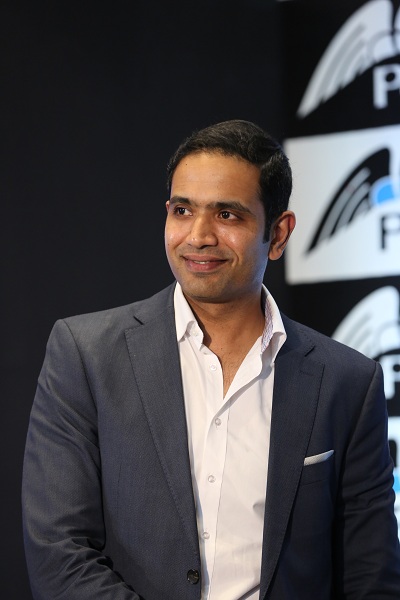With Pegasystems, you gain a transformational approach to case management that allows you to manage cases holistically. We provide support for all of the work that needs to be done, says Suman Reddy Eadunuri, MD, Pegasystems, in conversation with Sudheer Goutham of Elets News Network (ENN).
Are the banking, regulatory & financial monitoring sectors using enough technology to keep the industry on a growth path?
Technology is growing at a brisk pace and it will be hard for any regulatory body whether in India or across the globe to have enough expertise at any given point in time to monitor them effectively. The rapid evolution of technology and their usage in new areas makes it arduous for the regulators to carry out to that level of scrutiny. I believe regulators need to hold companies accountable for the use of technology to limit the cases of fraud and mitigate risks.
The job of the regulator is to ensure that they have adequate technology to enforce the use of various methods by organisations to safeguard themselves. As per the Reserve Bank of India (RBI) reports, the number of frauds has gone up in recent years.
Do you feel the Technology today can help in reducing these numbers?
In the banking sector, it could be a regulatory fraud, individual fraud, organisational fraud or any other risk, it totally depends on how data is being used or stored. There are adequate technologies today in the market to address these issues. With Pegasystems, you gain a transformational approach to case management that allows you to manage cases holistically.
The Pega case management system provides support for all kinds of work that need to be done. No matter what type of case management work is needed — structured, unstructured or event-driven— Pega case management can orchestrate the multiple processes, systems and people required to manage the case and any nested subcases and tasks. It purely caters to the banking sector to allow them to do their business as usual.
With the strong underlying case management processes and the data in the storage and whole Digital Process Automation (DPA) process that Pegasystems have, we make it extremely compliant for the banks to do them business and at the same time ensuring that they are maintaining all the regulatory compliance. So, we provide all the technologies that allow these banks to secure themselves and yet go for growth.
How can Pega’s blockchain kit help Indian banks? How Pega’s platform and next best action technologies are helping global banks to transform?
We have various pieces of technologies that can be leveraged both on the customer service side, one-to-one marketing side, sales automation side or KYC (Know Your Customer). Across all these sectors, Pegasystems has a proven technology that allows for larger organisations to leverage what’s out of the box, but also build custom processes in rapidly.
We offer a model-driven architecture platform that provides a no-code platform, allowing businesses and IT to come together and rapidly create processes to suit the customer’s banking needs. Predominantly, our strength has been the combination of our platforms. When you apply the power of Artifical Intelligence (AI), which is where we have differentiated ourselves by putting in a decision hub that sits at the centre of our entire platforms, allowing real-time monitoring across all the functional silos, such as sales service and marketing. It’s the core strength and when you apply all the driven architecture, it makes all the deployment easier.
In terms of workflow or adequate financial services, we have a huge risk. Whether it is on dispute management, KYC side or leveraging of the blockchain, we have provided a test kit. It especially focuses on the KYC, which potentially could change significantly in the future as it leverages the whole interim blockchain using the smart contracts philosophy. It in-turn reduces the burden of the individual bank to maintain a huge number of systems to ensure data secrecy and privacy, and data authentication on which the banks spend a lot of money.
How technology is going to change the banking sector in the next five years?
We have already seen the direction technology is moving towards. Some technologies have matured in the last couple of years like AI, application of AI on large data sets, etc., to get clear insights that can provide a meaningful recommendation to the end-customers. So, a huge trend which we are going to see in the next two-three years is how you put the customer at the centre of your whole experience.
Today, providing one-to-one, i.e. personalised services has become extremely important for large companies to get ahead. Today, all the AI-native industry understands you personally. The huge challenge in front of the banking and financial sector today is how do we get to that space. A lot of technologies like AI, Blockchain will be adopted, but the holistic designs of the future are about how to create the one-to-one connect that allows the banking systems to interact with their end customers.
Applying AI on the personalised data takes you back to one-to-one marketing, one-to-one customer an engagement which I feel is extremely crucial because today the customer wants the bank to come to them, and with the proliferation of various digital channels that we use, they don’t want to have a different experience depending on the channels they use.
They want a consistent experience throughout the channels. Context-sensitive personalised services are what customers want in today’s time across all digital channels.
What does India need to secure enterprise banking deals?
It’s a huge concern across the world and India is also working on a data privacy law that will come into effect hopefully sometime later this year. The organisations today have a lot of data, including, personal data. Now the concern is how they use that data. There are lots of other ways to use the data in a right and valid way, what we call as transparent AI.
We are the first ones in the industry to come up with transparent AI and opaque AI. With opaque AI, depending on who you are, you can make your systems take the right decisions for you in certain cases of banking. The transparent AI in our system is one that doesn’t allow the deep algorithm to go into the data sets. So we use the transparent AI which uses the decision switch and AI that is traceable. It is important to trace and audit how certain decisions are made. So from that perspective, it is very important that our software needs to take responsibility for providing a more transparent and meaningful decision-making the process so that it is auditable and safe for the organisation as well.
Elets The Banking and Finance Post Magazine has carved out a niche for itself in the crowded market with exclusive & unique content. Get in-depth insights on trend-setting innovations & transformation in the BFSI sector. Best offers for Print + Digital issues! Subscribe here➔ www.eletsonline.com/subscription/






















